- Home
- Orson Scott Card
Keeper of Dreams
Keeper of Dreams Read online
KEEPER
OF
DREAMS
ALSO BY ORSON SCOTT CARD
FROM TOM DOHERTY ASSOCIATES
Empire
The Folk of the Fringe
Future on Fire (editor)
Future on Ice (editor)
Hidden Empire
Invasive Procedures (with Aaron Johnston)
Lovelock (with Kathryn Kidd)
Maps in a Mirror: The Short Fiction of Orson Scott Card
Pastwatch: The Redemption of Christopher Columbus
Saints
Songmaster
Treason
The Worthing Saga
Wyrms
THE TALES OF ALVIN MAKER
Seventh Son
Red Prophet
Prentice Alvin
Alvin Journeyman
Heartfire
The Crystal City
ENDER
Ender’s Game
Ender’s Shadow
Shadow of the Hegemon
Shadow Puppets
Shadow of the Giant
Speaker for the Dead
Xenocide
Children of the Mind
First Meetings
A War of Gifts
Ender in Exile
The Authorized Ender Companion
HOMECOMING
The Memory of Earth
The Call of Earth
The Ships of Earth
Earthfall
Earthborn
WOMEN OF GENESIS
Sarah
Rebekah
Rachel & Leah
FROM OTHER PUBLISHERS
Enchantment
Homebody
Lost Boys
Magic Street
Stone Tables
Space Boy
Treasure Box
How to Write Science Fiction and Fantasy
Characters and Viewpoint
Orson Scott Card’s InterGalactic Medicine Show at oscigms.com
KEEPER
OF
DREAMS
ORSON SCOTT CARD
The author and publisher have provided this e-book to you without Digital Rights Management software (DRM) applied so that you can enjoy reading it on your personal devices. This e-book is for your personal use only. You may not print or post this e-book, or make this e-book publicly available in any way. You may not copy, reproduce or upload this e-book, other than to read it on one of your personal devices.
Copyright infringement is against the law. If you believe the copy of this e-book you are reading infringes on the author’s copyright, please notify the publisher at: us.macmillanusa.com/piracy.
This is a work of fiction and nonfiction. All of the characters, organizations, and events portrayed in these stories are either products of the author’s imagination or are used fictitiously.
KEEPER OF DREAMS
Copyright © 2008 by Orson Scott Card
All rights reserved.
A Tor Book
Published by Tom Doherty Associates, LLC
175 Fifth Avenue
New York, NY 10010
www.tor-forge.com
Tor® is a registered trademark of Tom Doherty Associates, LLC.
The Library of Congress has catalogued the hardcover edition as follows:
Card, Orson Scott.
Keeper of dreams / Orson Scott Card.—1st ed.
p. cm.
“A Tom Doherty Associates book.”
ISBN 978-0-7653-0497-1
1. Science fiction, American. 2. Fantasy fiction, American. I. Title.
PS3553.A655K44 2008
813’.54—dc22
2007046720
ISBN 978-0-7653-2414-6
First Hardcover Edition: April 2008
First Trade Paperback Edition: April 2010
Printed in the United States of America
0 9 8 7 6 5 4 3 2 1
FIRST PUBLICATION
SCIENCE FICTION
“The Elephants of Poznan”—Fantastyka (Poland)
“Atlantis”—Grails: Quests, Visitations and Other Occurrences, ed. Richard Gilliam, Martin H. Greenberg, and Edward E. Kramer
“Geriatric Ward”—Written for Last Dangerous Visions, ed. Harlan Ellison, but never published
“Heal Thyself”—Amazing Stories, Summer 1999
“Space Boy”—Escape from Earth: New Adventures in Space, ed. Gardner Dozois and Jack Dann
“Angles”—Destination 3001, ed. Robert Silverberg and Jacques Chambon (France)
FANTASY
“Vessel”—BEM Magazine (Spanish); The Magazine of Fantasy and Science Fiction, December 1999 (English)
“Dust”—Doorways
“Homeless in Hell”—http://www.hatrack.com/osc/stories/homeless-in-hell.shtml
“In the Dragon’s House”—The Dragon Quintet, ed. Marvin Kaye
“Inventing Lovers on the Phone”—Stars: Original Stories Based on the Songs of Janis Ian, ed. Janis Ian and Mike Resnick
“Waterbaby”—Galaxy Online
“Keeper of Lost Dreams”—Flights: Visions of Extreme Fantasy, ed. Al Sarrantonio
“Missed”—Greensboro News & Record
LITERARY
“50 WPM”—In the Shadow of the Wall: An Anthology of Vietnam Stories That Might Have Been, ed. Byron R. Tetrick
“Feed the Baby of Love”—The Bradbury Chronicles, ed. William F. Nolan and Martin H. Greenberg
HATRACK RIVER
“Grinning Man”—Legends: Short Novels by the Masters of Modern Fantasy, ed. Robert Silverberg
“The Yazoo Queen”—Legends II: New Short Novels by the Masters of Modern Fantasy, ed. Robert Silverberg
MORMON STORIES
“Christmas at Helaman’s House”—Christmas for the World: A Gift to the Children, ed. Curtis Taylor and Stan Zenk
“Neighbors”—Vigor
“God Plays Fair Once Too Often”—Hillcon II Souvenir Booklet (Rotterdam)
“Worthy to Be One of Us”—Turning Hearts: Short Stories on Family Life, ed. Orson Scott Card and David Dollahite
To Andy and Debbie Lindsay.
The play’s the thing . . .
CONTENTS
Preface
I SCIENCE FICTION
The Elephants of Poznan
Atlantis
Geriatric Ward
Heal Thyself
Space Boy
Angles
II FANTASY
Vessel
Dust
Homeless in Hell
In the Dragon’s House
Inventing Lovers on the Phone
Waterbaby
Keeper of Lost Dreams
Missed
III LITERARY
50 WPM
Feed the Baby of Love
IV HATRACK RIVER
Grinning Man
The Yazoo Queen
V MORMON STORIES
Christmas at Helaman’s House
Neighbors
God Plays Fair Once Too Often
Worthy to Be One of Us
PREFACE
When I was just starting out as a writer, one of the reasons I chose to work in the science-fiction genre was because there was a viable short-story market—one that paid, but not enough to live on.
This was and remains vitally important to science fiction’s success as a genre of literature. Short stories give writers a place to try out their ideas and find their voices, with an audience to goad them on, through either their jeers or their applause. A new writer’s short story is published in the company of other people’s work, rubbing shoulders with fiction that appeals to different people and uses different techniques.
It’s like being invited to a crowded party, where you don’t know anybody but
you’re pressed by the crowd right into the middle and rather forced to be part of the conversation whether you like it or not.
But because short stories don’t pay well, anyone trying to make a career in science fiction has to move to novels as quickly as possible. Novels are a different form from the short story and not everyone learns how to make the transition. However, most do.
This means that the “stars” who might dominate the party are always being drawn out another door, and the new short-story writer has a chance to become something of a hit at the party. Short-story writers get noticed. And that is more important to a young writer than the money.
Truly.
If you got three thousand bucks for a short story but never heard the slightest feedback, the money would be gone and you would feel empty. But get three hundred bucks for the story and a lot of comment, with (perhaps) a Nebula recommendation or two, and you are much encouraged. Or even if somebody absolutely savages your story, then—unless you’re so fragile you can’t stand the slightest jostling—you buckle down to show them what you can do.
At the same time, if you got only thirty dollars, then it would feel like a hobby instead of a profession.
That’s the situation I found when I entered the science-fiction field—a handful of magazines, paying not too much, not too little: Analog, Fantasy and Science Fiction, Galaxy, and, at that precise moment, Amazing and Fantastic. Soon the last three would disappear, but a new one—Isaac Asimov’s Science Fiction Magazine—arose and quickly outsold them all.
And then Omni came along and for a short while dosed the field with payments in the thousands of dollars.
It was a heady time, with Asimov’s and Analog selling upwards of 100,000 copies per issue and F&SF not far behind at a steady 80,000.
It’s a different world today. The numbers for the magazines are wincingly smaller. I think the main reason is that the newsstands are gone. Now, if you see a sci-fi magazine at all, it’s at the back of the bottom shelf at Barnes & Noble or Borders; a tall person has to kneel to even know that shelf exists.
Or it might be a decline in the science-fiction field as a whole. Or a decline in the quality of the editing. Or the rise of fantasy as the dominant form of speculative fiction. Or the movement of science fiction to television and the movies instead of print. I’m not pretending to know why the circulation numbers are now in the 8,000–20,000 range, less than a fifth of what they used to be.
But the need for short stories hasn’t abated. It’s still where new writers get discovered.
There have been quite a few excellent anthologies to take up the slack. The trouble is that most anthologies—and certainly the ones that sell best—put together known writers, each of whom brings some portion of his audience to the book. So new writers need not apply.
The only exception is the outstanding Writers of the Future series, which has, for decades now, devoted itself to discovering new writers and introducing them to the public. Many a fine career has begun in the pages of that anthology series.
And I’m not the only one who has tried to find a way to use the net to reinvent the sci-fi magazine. My modestly titled Orson Scott Card’s InterGalactic Medicine Show (at http://www.oscigms.com) is my effort to try to keep alive for a new generation of writers something like the situation I found when I was starting out. With occasional print anthologies drawn from the online zine to help draw people from the bookstore to the net, I hope we—and others as well—can succeed.
But what about my short stories? I’m not starting out anymore. I came to the short-story party, I jostled around for a while, and then I went on to write novels, which is where my career is firmly settled.
A story collection called Maps in a Mirror brought together most of my short fiction from that early formative stage of my career. Only a few of the early stories were excluded—the ones that belonged in story cycles, like The Worthing Saga and The Folk of the Fringe, or the stories that were always fragments of novels, like the Hatrack River stories that ended up in Seventh Son, Red Prophet, and Prentice Alvin.
I was done with short stories, wasn’t I? And yet here we are with another big fat book of short fiction by Orson Scott Card. Where did all this stuff come from?
What’s the inducement for an established writer to return to the short-story market? While it’s true that short stories require less typing than novels, they don’t take much less in the way of development. That is, to get a story ready to be written, to bring it to ripeness, takes about as much time and effort no matter how long the finished fiction turns out to be.
So why would I devote any time to writing short stories, for a few hundred or, sometimes, a few thousand dollars, when I can get many times more if I turn that idea into a book?
Believe me, that’s not a rhetorical question. Sometimes, when I’m late on a book which will actually pay the bills, and I stop to write a short story that I promised to an anthology editor, my wife looks at me and says (only more nicely), “What were you thinking?”
Good question.
How does a serious novelist end up with more than 200,000 words of short stories, novelets, and novellas?
One answer is: I’m one of the writers who gets invited to take part in some really cool anthologies. Robert Silverberg tells me about a series of big-name-only science-fiction and fantasy anthologies he’s editing, and invites me to contribute a story to the sci-fi volume. Sure, I say—are you kidding? He’s not just a friend, he’s a legend in the field, and it’s going to be a great book.
Or a total stranger says, We’re doing an anthology of stories about the Vietnam War, and I say, I didn’t fight in that war, and I didn’t fight against it, I don’t see what I could contribute . . . but then my mind starts ticking over the problem and I realize there is a story for somebody like me to write and so I write it.
Or they’re putting together a book for the World Fantasy Convention just at the time that I’m developing this cool concept of the source of all the stories of the Flood, and so instead of waiting till I’m ready to write the novel, I write a very long story that gets it down on paper. It’s a trial run. I’m still going to write the novel . . . someday.
Or I go to another country and see a plaza that is so fascinating I have to set a story there, and just at that moment I’m reading a fascinating book about elephants, and those two things come together and I have to write the story.
Or Christmas is coming, and on a lark I decide to whip out a whimsical little Christmas story.
So it comes to four things driving this novelist, at least, to write short stories:
The irresistible anthology.
Stories for a particular occasion.
The big idea that has to get down on paper so I might as well try it out as a short story first and see if it’s good enough to grow into a book.
The jewel of an idea that is fully formed and simply has to exist as a short story, even if it doesn’t make me any money.
Story by story, I’ll tell you in afterwords just how each of these tales arose. Right here, though, I’ll simply tell you how surprised I was to realize just how much short fiction I had written over the years. Some of my best work is here, I think.
I appreciate your being willing to look at my shorter pieces, and I hope you find them worth the time you devote to them.
But I hope you’ll also remember that there are new writers out there, trying to be part of the conversation. Look for the magazines—online or in print—and the anthologies and collections. Give them a try. I can promise you that now and then—more often than you might suppose—you’ll find something and somebody wonderful.
Because if sci fi is to survive as a genre, it won’t be because readers stick to books with familiar names on the cover. I grew up in the era when the great triumvirate of Heinlein, Asimov, and Clarke ruled the field. But they aren’t producing much anymore. They moved on. So will the next generation, and the one after that. If there is no new generation to take their plac
e, then the genre becomes a part of literary history, no longer able to produce great new work. And if a new generation is to take flight, it will fledge in the nest of short fiction.
I
SCIENCE FICTION
THE ELEPHANTS OF POZNAN
In the heart of old Poznan, the capital of Great Poland since ancient times, there is a public square called Rynek Glowny. The houses around it aren’t as lovely as those of Krakow, but they have been charmingly painted and there is a faded graciousness that wins the heart. The plaza came through World War II more or less intact, but the Communist government apparently could not bear the thought of so much wasted space. What use did it have? Public squares were for public demonstrations, and once the Communists had seized control on behalf of the people, public demonstrations would never be needed again. So out in the middle of the square they built a squat, ugly building in a brutally modern style. It sucked the life out of the place. You had to stand with your back to it in order to truly enjoy the square.

 Shadows in Flight
Shadows in Flight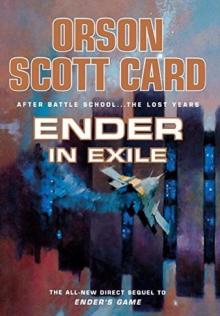 Ender in Exile
Ender in Exile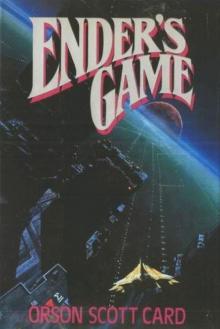 Ender's Game
Ender's Game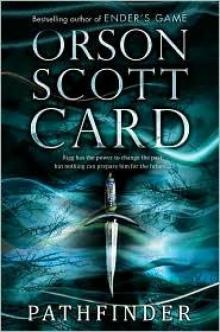 Pathfinder
Pathfinder Children of the Fleet
Children of the Fleet Children of the Mind
Children of the Mind Ruins
Ruins Speaker for the Dead
Speaker for the Dead Ender's Shadow
Ender's Shadow Folk of the Fringe
Folk of the Fringe Hart's Hope
Hart's Hope Shadow of the Giant
Shadow of the Giant Empire
Empire Shadow Puppets
Shadow Puppets Earth Afire
Earth Afire First Meetings in Ender's Universe
First Meetings in Ender's Universe Maps in a Mirror: The Short Fiction of Orson Scott Card
Maps in a Mirror: The Short Fiction of Orson Scott Card Xenocide
Xenocide The Swarm: The Second Formic War
The Swarm: The Second Formic War Saints
Saints Seventh Son: The Tales of Alvin Maker, Volume I
Seventh Son: The Tales of Alvin Maker, Volume I Zanna's Gift
Zanna's Gift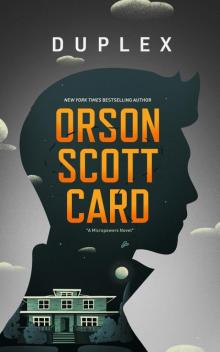 Duplex
Duplex Zanna's Gift- a Life in Christmases
Zanna's Gift- a Life in Christmases Hidden Empire
Hidden Empire Earth Awakens
Earth Awakens Visitors
Visitors Shadow of the Hegemon
Shadow of the Hegemon Alvin Jorneyman ttoam-4
Alvin Jorneyman ttoam-4 Federations
Federations The Gate Thief mm-2
The Gate Thief mm-2 First Meetings
First Meetings Capitol
Capitol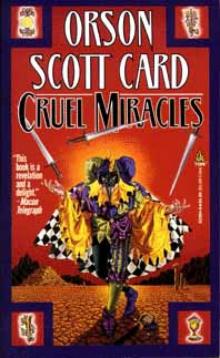 Cruel Miracles
Cruel Miracles Shadows in Flight, enhanced edition
Shadows in Flight, enhanced edition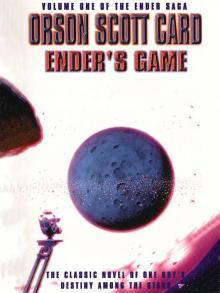 Ender's Game es-1
Ender's Game es-1 Ruins (Pathfinder Trilogy)
Ruins (Pathfinder Trilogy) Ender's Shadow ew-6
Ender's Shadow ew-6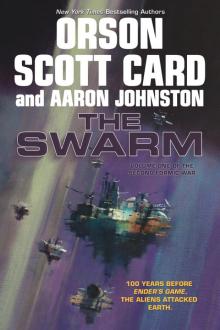 The Swarm
The Swarm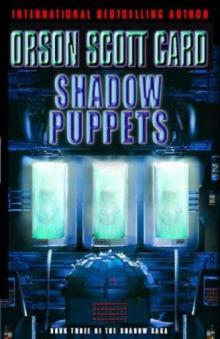 Card, Orson Scott - Ender's Saga 7 - Shadow Puppets
Card, Orson Scott - Ender's Saga 7 - Shadow Puppets Lost Boys: A Novel
Lost Boys: A Novel Mazer in Prison
Mazer in Prison Treason
Treason Heal Thyself
Heal Thyself The Call of Earth
The Call of Earth Songmaster
Songmaster Heartfire ttoam-5
Heartfire ttoam-5 Pastwatch
Pastwatch Gatefather
Gatefather The Ships of Earth: Homecoming: Volume 3
The Ships of Earth: Homecoming: Volume 3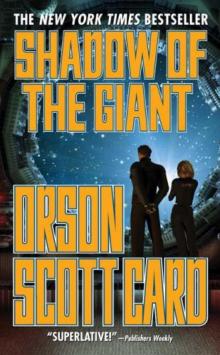 Orson Scott Card - Ender 08 - Shadow of the Giant
Orson Scott Card - Ender 08 - Shadow of the Giant Flux
Flux Speaker for the dead ew-2
Speaker for the dead ew-2 Grinning Man
Grinning Man Ruins sw-2
Ruins sw-2 Earth Unaware
Earth Unaware The Worthing Saga
The Worthing Saga Earthfall (Homecoming)
Earthfall (Homecoming) Card, Orson Scott - Ender's Saga 5 - Ender's Shadow
Card, Orson Scott - Ender's Saga 5 - Ender's Shadow The Abyss
The Abyss Magic Street
Magic Street Masterpieces
Masterpieces Prentice Alvin ttoam-3
Prentice Alvin ttoam-3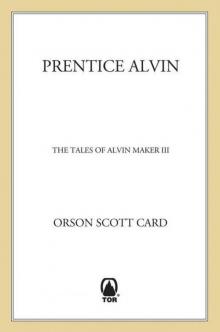 Prentice Alvin: The Tales of Alvin Maker, Volume III
Prentice Alvin: The Tales of Alvin Maker, Volume III Card, Orson Scott - Ender's Saga 3 - Xenocide
Card, Orson Scott - Ender's Saga 3 - Xenocide Homeless in Hell
Homeless in Hell Red Prophet: The Tales of Alvin Maker, Volume II
Red Prophet: The Tales of Alvin Maker, Volume II Earthborn (Homecoming)
Earthborn (Homecoming)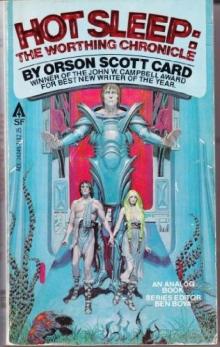 Hot Sleep
Hot Sleep The Hive
The Hive Rachel and Leah (Women of Genesis)
Rachel and Leah (Women of Genesis) Ender's World
Ender's World The Memory of Earth
The Memory of Earth Seventh Son ttoam-1
Seventh Son ttoam-1 Wyrms
Wyrms A Town Divided by Christmas
A Town Divided by Christmas Earth unavare (the first formic war)
Earth unavare (the first formic war) The Shadow of the Hegemon - Orson Scott Card
The Shadow of the Hegemon - Orson Scott Card Earthfall
Earthfall Lost Boys
Lost Boys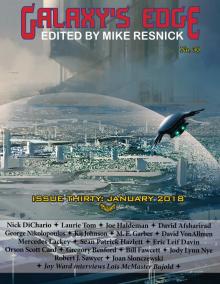 Galaxy's Edge Magazine
Galaxy's Edge Magazine Sarah: Women of Genesis: 1 (Women of Genesis (Forge))
Sarah: Women of Genesis: 1 (Women of Genesis (Forge)) The Crystal City: The Tales of Alvin Maker, Volume VI
The Crystal City: The Tales of Alvin Maker, Volume VI Xenocide ew-4
Xenocide ew-4 Earth Afire (The First Formic War)
Earth Afire (The First Formic War) Maps in a Mirror
Maps in a Mirror Pathfinder sw-1
Pathfinder sw-1 Red Prophet ttoam-2
Red Prophet ttoam-2 THE CRYSTAL CITY
THE CRYSTAL CITY 27 Short Stories
27 Short Stories Heartfire: The Tales of Alvin Maker, Volume V
Heartfire: The Tales of Alvin Maker, Volume V Alvin Journeyman: The Tales of Alvin Maker, Volume IV
Alvin Journeyman: The Tales of Alvin Maker, Volume IV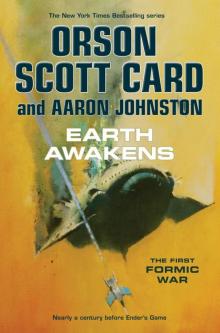 Earth Awakens (The First Formic War)
Earth Awakens (The First Formic War) THE SHIPS OF EARTH
THE SHIPS OF EARTH The Changed Man
The Changed Man Future on Fire
Future on Fire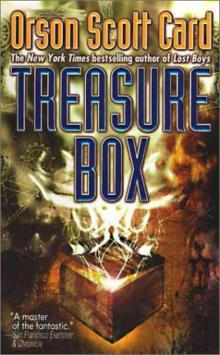 Treasure Box
Treasure Box The Gate Thief
The Gate Thief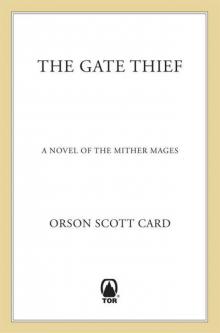 The Gate Thief (Mither Mages)
The Gate Thief (Mither Mages) First Meetings In the Enderverse
First Meetings In the Enderverse Earthborn
Earthborn Seventh Son
Seventh Son Pastwatch: The Redemption Of Christopher Columbus
Pastwatch: The Redemption Of Christopher Columbus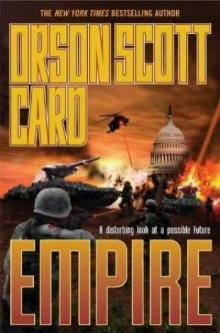 Empire e-1
Empire e-1 Keeper of Dreams
Keeper of Dreams Card, Orson Scott - Ender's Saga 1 - Ender's Game
Card, Orson Scott - Ender's Saga 1 - Ender's Game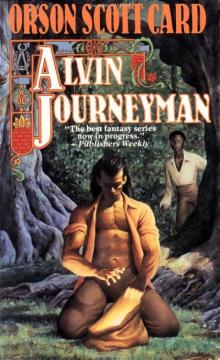 ALVIN JOURNEYMAN
ALVIN JOURNEYMAN The Lost Gate
The Lost Gate Feed The Baby Of Love
Feed The Baby Of Love Hot Sleep: The Worthing Chronicle
Hot Sleep: The Worthing Chronicle